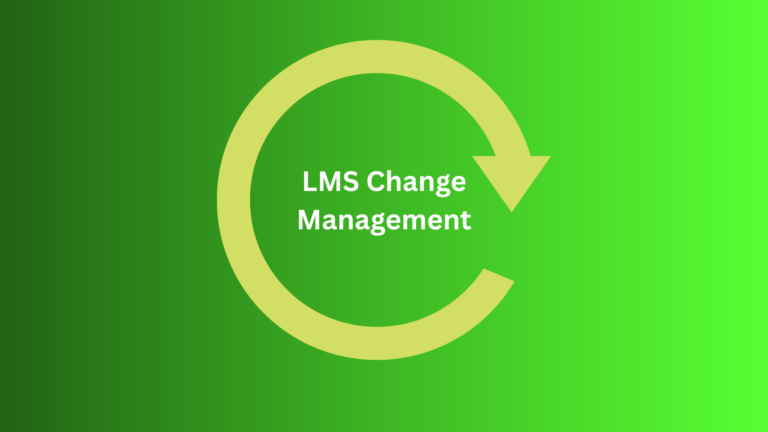Are you tired of managing your organization’s training and development programs manually? Do you struggle to keep track of employee progress and certifications? It may be time to consider LMS implementation.
In today’s fast-paced business world, keeping your employees up to date with the latest skills and knowledge is crucial. Traditional training methods can be time-consuming, expensive, and difficult to track. That’s where LMS comes in. LMS is a software application that allows you to manage and deliver online training and development programs to your employees.
LMS implementation in your organization can have numerous benefits, including cost savings, increased productivity, and improved employee engagement. In this article, we’ll explore the advantages of using an LMS and how it can transform your organization’s training and development programs.

What is a Learning Management System?
A Learning Management System (LMS) is a software application that enables the administration, documentation, tracking, reporting, and delivery of educational courses, training programs, or learning and development programs. It is designed to support the delivery of educational content and the management of student or learner data, including progress, performance, and achievement. An LMS can be used by educational institutions, corporations, or other organizations to deliver online or blended learning programs to students or employees.
What are the benefits of it?
In today’s fast-paced and ever-changing business world, companies need to stay ahead of the curve. One way to do this is by LMS implementation into their operations. An LMS can provide numerous benefits to businesses, and in this post, we will explore 20 ways it can help.
1. Improve employee training and development
Improving employee training and development involves enhancing the knowledge, skills, and abilities of workers through targeted educational programs, mentorship, and coaching. This process aims to increase employee productivity, satisfaction, and overall performance, ultimately benefiting the organization as a whole.
2. Enhance onboarding processes for new hires
Enhancing onboarding processes for new hires refers to improving the procedures and methods used to introduce and integrate new employees into a company or organization. LMS implementation also includes effective training programs, providing necessary resources and support, and streamlining administrative tasks to ensure a smooth transition into the new role.
3. Provide consistent training for all employees
Providing consistent training for all employees means ensuring that every member of the workforce receives the same level of education and skill development, without any discrepancies or variations in the training process. This helps to establish uniformity and standardization in the workplace, leading to increased productivity, efficiency, and overall performance.
4. Offer personalized learning paths for employees
To offer personalized learning paths for employees is to provide tailored educational programs and resources. It is based on their specific skills, interests, and career goals, to enhance their professional development and job performance.
5. Track employee progress and performance
Track employee progress and performance is the act of monitoring and assessing an employee’s work output and growth over some time to evaluate their productivity, skill level, and overall contribution to the organization. This may involve setting goals, providing feedback, conducting performance reviews, and implementing strategies for improvement.
6. Identify skill gaps and provide targeted training
Identifying skill gaps and providing targeted training refers to the process of identifying areas where employees lack the necessary skills or knowledge. This will help them in their job and provide specific training to address those gaps. This approach ensures that employees have the required competencies to perform their jobs effectively and efficiently.
7. Offer flexible learning options
Offering flexible learning options refers to providing students with different learning methods. This can accommodate different schedules, learning styles, and preferences. This may include online classes, hybrid courses, self-paced programs, evening or weekend classes, and other alternative learning arrangements. Flexible learning options are to make education more accessible and convenient for a wider range of learners.
8. Save time and money on training
“Save time and money on training” means reducing the number of resources, time, and finances, required to train individuals or groups in a particular skill or knowledge area. This can be achieved through the use of more efficient training methods, such as online or blended learning. Also, you can streamline the training process to focus on essential skills and knowledge.

9. Reduce turnover rates through employee development
Reducing turnover rates through employee development refers to the process of improving employee skills, knowledge, and abilities through training and professional development opportunities, intending to retain employees, and reducing turnover within an organization. This strategy involves investing in employees’ growth and career advancement, which can lead to improved job satisfaction, productivity, and loyalty to the company.
10. Increase employee engagement and satisfaction
Increasing employee engagement and satisfaction refers to the process of improving the level of enthusiasm, commitment, and happiness that employees feel toward their work and their workplace. This can involve implementing various strategies and initiatives that foster a positive work culture, such as providing opportunities for professional development, recognizing and rewarding employee achievements, and promoting work-life balance. The ultimate goal of increasing employee engagement and satisfaction is to enhance overall productivity and performance while creating a more fulfilling and enjoyable work environment for employees.
11. Foster a culture of continuous learning
Fostering a culture of continuous learning means encouraging and supporting an environment where individuals and organizations prioritize ongoing education and development to improve skills, knowledge, and performance. This involves creating opportunities for learning, promoting a growth mindset, and valuing and recognizing the importance of ongoing learning and development.
12. Provide compliance training and certifications
It includes educating individuals or organizations on the rules, regulations, and ethical standards that govern their industry or profession. This training typically covers topics such as legal requirements, industry best practices, and ethical considerations. It may also result in the awarding of certifications or other credentials upon successful completion. The goal of compliance training and certifications is to promote responsible and ethical behavior, ensure compliance with applicable laws and regulations, and mitigate risk for individuals and organizations.
13. Improve communication and collaboration among employees
Improving communication and collaboration among employees is intended to enhance the exchange of ideas, feedback, and information in a workplace. It also helps in fostering teamwork and cooperation, leading to increased productivity and job satisfaction. This can be achieved through various means, such as open communication channels, team-building activities, training programs, and technology tools.
14. Increase productivity and efficiency
Increasing productivity and efficiency refers to the process of improving the output and effectiveness of a system or process by minimizing waste, reducing errors, optimizing resources, and streamlining workflows. This can lead to greater output, faster completion times, and a more streamlined and effective operation overall.
15. Provide access to training materials anytime, anywhere
Providing access to training materials anytime anywhere refers to the ability to access educational resources and materials at any time and from any location. The learners can access resources at their convenience, allowing them to learn at their own pace and on their schedule.
In conclusion, LMS implementation in your organization can bring numerous benefits. It includes increasing employee engagement and satisfaction and fostering a culture of continuous learning. Moreover, providing compliance training and certifications, improving communication and collaboration among employees, increasing productivity and efficiency, and providing access to training materials anytime, anywhere.
Read more to know how can you increase LMS adoption: Read article



